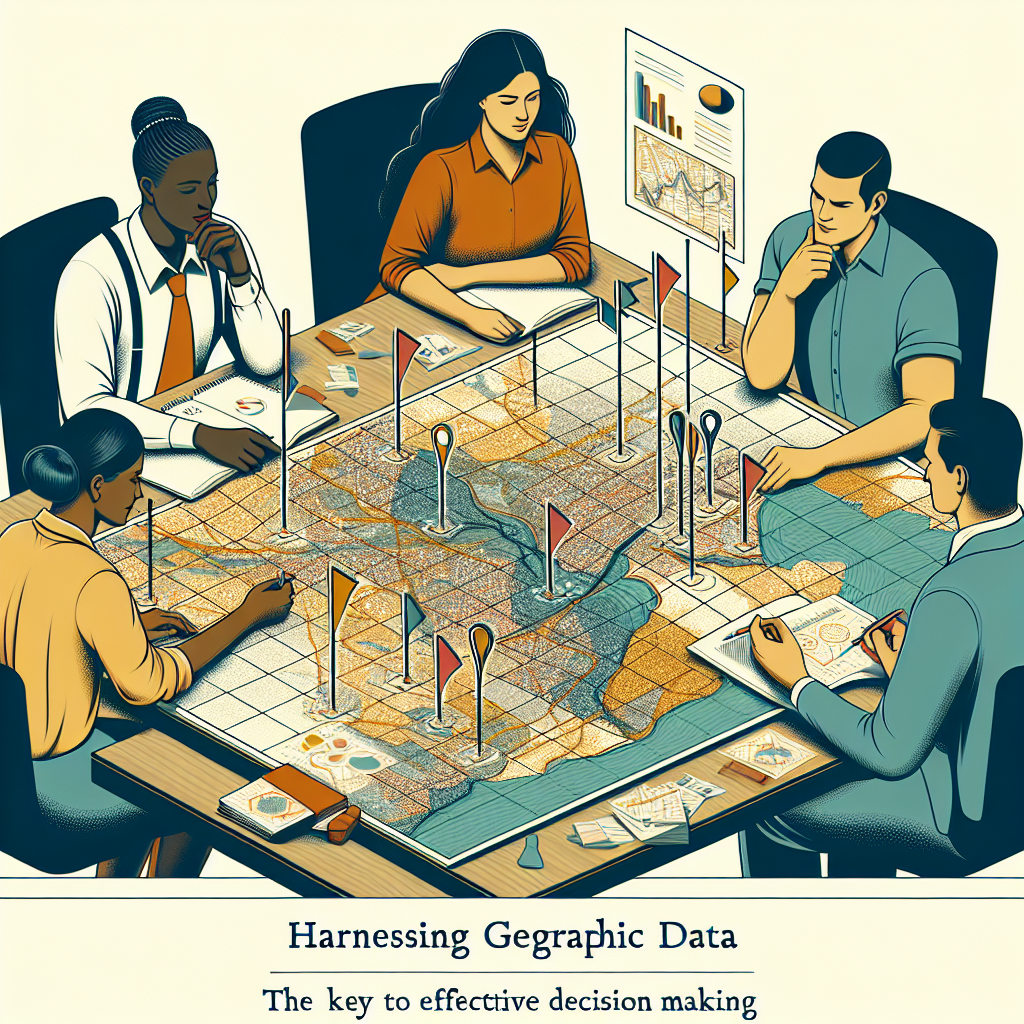In today’s digitized world, geographic data plays a crucial role in decision-making processes across various industries. From urban planning and disaster management to marketing and business development, harnessing geographic data is essential for making informed choices and achieving desired outcomes. Geographic data provides valuable insights into different aspects of a location, such as population density, infrastructural layout, and environmental conditions, which can greatly influence decision-making processes.
One key benefit of harnessing geographic data is the ability to identify patterns and trends that may not be immediately obvious. By analyzing geographic data, decision-makers can uncover correlations between variables such as crime rates and socioeconomic factors, or consumer behavior and location. This information can be invaluable in shaping policies, strategies, and initiatives that are tailored to specific geographical areas and demographics. For example, a retail store looking to expand into a new market can use geographic data to pinpoint the most lucrative locations based on foot traffic, competitor presence, and consumer demographics.
Moreover, geographic data enables decision-makers to visualize and analyze spatial relationships, helping them to better understand the interconnectedness of different elements within a geographic area. This can be particularly useful in urban planning and infrastructure development, where factors such as transportation networks, land use, and environmental resources must be carefully considered. By harnessing geographic data, planners and policymakers can create more efficient and sustainable solutions that meet the needs of both current and future generations.
Another advantage of harnessing geographic data is its ability to support risk assessment and mitigation efforts. For example, in disaster management, geographic data can be used to identify high-risk areas prone to natural hazards such as floods, wildfires, or earthquakes. By mapping out these areas and understanding the underlying factors that contribute to their vulnerability, emergency responders can develop proactive strategies to minimize the impact of disasters and protect lives and property. Similarly, businesses can use geographic data to assess potential risks associated with market expansion, supply chain management, and other operational activities.
Furthermore, geographic data can enhance decision-making processes by providing a spatial context for complex information. By visualizing data on a map, decision-makers can gain a deeper understanding of how different variables interact within a specific geographic area. This can help them to identify outliers, anomalies, and opportunities that may not be apparent when looking at data in isolation. For example, a healthcare provider analyzing patient demographics and disease incidence rates can use geographic data to identify clusters of high-risk populations and allocate resources accordingly.
In addition to facilitating data-driven decision-making, harnessing geographic data can also improve communication and collaboration among stakeholders. By sharing interactive maps and visualizations, decision-makers can effectively convey complex information in a clear and understandable manner. This can foster greater transparency, engagement, and buy-in from stakeholders, leading to more informed and inclusive decision-making processes. By enabling stakeholders to explore data in a spatial context, geographic data can bridge gaps in knowledge and perspective, ultimately leading to more effective and consensus-driven decisions.
In conclusion, harnessing geographic data is the key to effective decision-making in a wide range of industries and contexts. By leveraging the power of geographic information systems (GIS), decision-makers can gain valuable insights, identify patterns and trends, and make informed choices that drive positive outcomes. Whether it’s urban planning, disaster management, marketing, or business development, geographic data provides a valuable tool for understanding and improving the world around us. As technology continues to advance and data sources become increasingly abundant, harnessing geographic data will only become more essential for making meaningful and impactful decisions.




